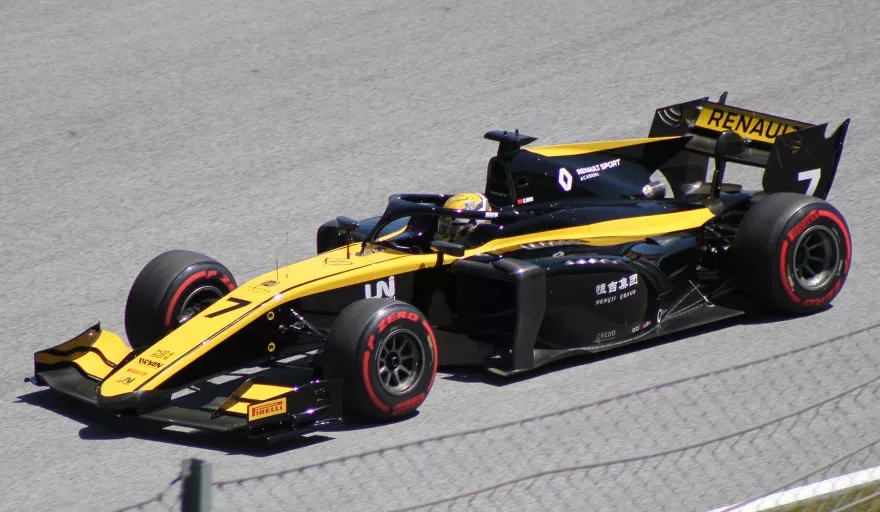Guanyu Zhou is set to become Formula 1’s first ever Chinese driver, in the latest milestone for motorsport in the APAC region.
FORMULA FOR SUCCESS
History will be made in the 2022 Formula 1 (F1) season when Guanyu Zhou lines up on the grid for Alfa Romeo Racing.
Announced in November, he will replace the departing Antonio Giovinazzi, becoming the very first Chinese driver to compete in the pinnacle of motorsport in the process.
At the age of 22, Guanyu Zhou will be the latest in a blossoming generation of talent from Asia Pacific to make it to F1. He will be joined next season by Daniel Ricciardo, Yuki Tsunoda and Alex Albon, who are Australian, Japanese and Thai-British, respectively.
A sport traditionally dominated by European drivers, it now means that a fifth of the 20-man F1 grid in 2022 will be of APAC descent, an unprecedented reflection of the continued growth of motorsport pedigree in the region.
Historically, for regions such as Asia, the cost of climbing the motorsport ladder has been prohibitively high for drivers, limiting access to feeder series’ such as Formula 2, which form the pathway to F1.
Zhou is an exemption to the rule, as he joins F1 not only with significant feeder series experience, but also substantial financial backing. As a result, it is anticipated that Zhou’s arrival will allow Alfa Romeo Racing, and the wider sport, to commercially benefit and entice more Chinese sponsors into the championship over the coming years. Similarly, Yuki Tsunoda is heavily backed by Honda and Red Bull, facilitating his entry into F1 in 2020 with the Honda-powered, Red Bull-owned AlphaTauri team.
In order for F1 to truly market itself as having the world’s best drivers, it must address the hurdles that remain for drivers outside of Europe.
Many young Asian drivers still move to Europe to grow up in a more established motorsport environment. Having started karting in China when he was eight years old, Zhou himself moved to Sheffield in 2012 to race in a more competitive European field.
The hope for Asia is that the grassroots motorsport scene will improve to allow more drivers to develop in their native region, and encourage more youngsters to take up the sport. Now that APAC is producing a number of high-quality drivers, such as Zhou, the sport has never had a greater chance of thriving in the region.
It comes as F1 recently agreed deals with multiple broadcast partners in Asia until the end of the 2022 season, ensuring that millions of fans can continue to watch live F1 action on the continent.
F1 also recently extended its contract with the Chinese Grand Prix until 2025, keeping the Shanghai International Circuit on the race calendar alongside other established tracks in the APAC region such as the Suzuka Circuit in Japan, the Marina Bay Street Circuit in Singapore, and the Albert Park Circuit in Australia.
Furthermore, F1 remains hopeful of hosting a Vietnamese Grand Prix, which was postponed and later cancelled due to the COVID-19 pandemic, demonstrating the sport’s endeavour to continue increasing its APAC footprint.
As somewhere that continues to thrive in terms of tourism and business, F1’s plans for a Vietnamese Grand Prix exemplify the sport’s desire to penetrate so-called destination cities and countries – locations that can capture the world’s imagination.
The Philippines, meanwhile, has also been publicly linked with hosting an F1 race in recent years, at a time when the archipelago is making a major push into motorsport.
More from APAC Outlook
It remains to be seen whether Vietnam, or indeed the Philippines, will join the likes of China, Japan and Singapore in becoming an F1 staple in the APAC region, or suffer the same fate as India and South Korea, two destinations in which the sport tried but ultimately struggled to take hold.
The addition of the Buddh International Circuit in India, an emerging international power with one of the fastest-growing economies in the world, was widely welcomed a decade ago in 2011, whilst a South Korean Grand Prix in Yeongam made commercial sense for F1 as one of the most westernised economic boom regions in APAC.
Political and financial issues meant both venues last hosted a race in 2013, four years prior to the omission of Malaysia’s much-loved Sepang International Circuit from the calendar, which first paved the way for F1’s eastern migration in 1999. However, it’s clear that the appetite remains to increase F1’s presence in the APAC market, both in terms of tracks and drivers.





















